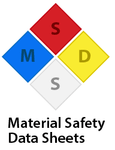Identification of a rapid test for SARS-CoV-2
The study, published in the Annals of the Chemical Society: Analytical Chemistry, reported on the results of the RIVIA test in screening for neutralizing antibodies. The assay aimed to achieve the same results as a VNA but with a shorter turnaround time and with the same inhibition efficacy. The researchers used four antigens that make up the spike of SARS-CoV-2, namely the receptor binding domain (RBD), spike subunit S1, S-extracellular domain (S-ECD), and homotrimer S-ECD. The goal was to find the optimal peak component that would be closest to pVNA results.
They also used seven anti-RBD monoclonal antibodies (mAbs) with different affinities and binding epitopes to produce a result that could be generalized to a range of antibodies against the virus. These included rabbit, mouse, and human mAbs with strong neutralizing activity against the virus, as well as one with strong binding but low neutralizing efficacy, CR3022.
These were first incubated with the various tip components and then allowed to react with ACE2 in a microfluidic chamber. By balancing the total incubation time with the turnaround time, they found that the test could be completed in 90 minutes, even with one hour of incubation. Simultaneously, they used the same reagents in a SARS-CoV-2 pVNA configuration, to perform a direct comparison.
The results showed that RIVIA produces pVNA-like results only with S-ECD, as expected because it has the right configuration compared to the actual viral spike protein. R001 had the greatest neutralizing power. Control antibody D006 is non-neutralizing, while CR3022 only neutralizes the pseudovirus at very high concentrations (~20,000 ng/mL).
In fact, neutralization inhibition in 50% of cells (IC50) with CR3022 is only achieved > 1000 ng/mL. With RIVIA and S-ECD, therefore, non-neutralizing and weakly neutralizing antibodies can be eliminated from strong neutralizing antibodies, which all show similar IC50 to pVNA results.
RBD, S1, and even S-ECD monomer could not replicate this effect due to their smaller size, which allowed the neutralizing efficacy of the weakly neutralizing CR3022 to be overestimated. In fact, with RBD, even the control D006 antibody inhibited RBD binding by more than 50% at high concentrations, either due to small size or secondary epitope binding.
